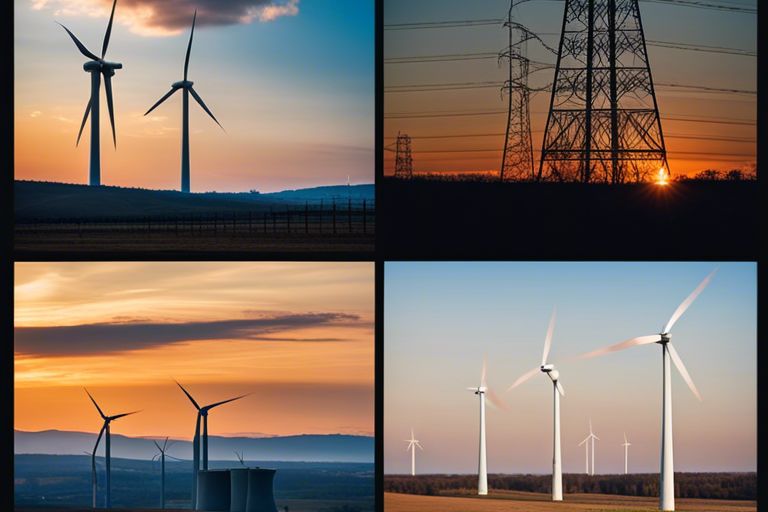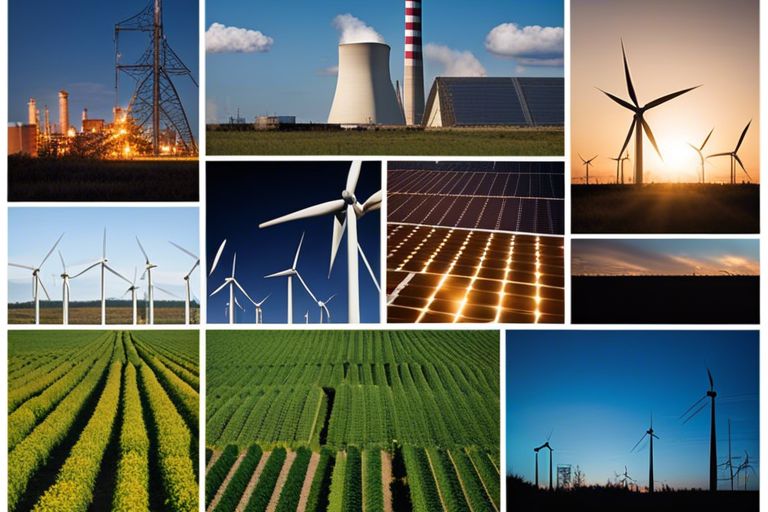Most fossil fuel-dependent states like Oklahoma are facing increasing pressure to diversify their energy sources for electricity generation. Coal-fired power plants have long been the primary source for electricity in the state, but recent advancements in renewable energy technologies and growing concerns about climate change are prompting a shift towards a more diverse energy mix. This blog post will explore the current state of Oklahoma’s energy landscape, the challenges and benefits of transitioning away from coal, and the steps being taken towards embracing a more sustainable and diverse energy future.

Key Takeaways:
- Oklahoma’s energy mix: Oklahoma is expanding its energy sources beyond coal in electricity generation to include natural gas, wind, and solar power.
- Government support: The state government is providing incentives and policies to promote the growth of renewable energy sources in Oklahoma.
- Economic benefits: Diversifying the energy mix in Oklahoma not only promotes environmental sustainability but also generates economic benefits by creating jobs and attracting investments.
- Energy transition: Oklahoma is experiencing a transition towards cleaner energy sources due to consumer demand, technological advancements, and cost efficiency of renewables.
- Future prospects: By embracing a diverse energy mix, Oklahoma is poised to achieve energy security, reduce greenhouse gas emissions, and contribute to a more sustainable energy future.
Historical Context of Energy Use in Oklahoma
Oklahoma’s Reliance on Coal
Assuming a dominant role in Oklahoma’s energy landscape for decades, coal has been the primary fuel source for electricity generation in the state. With a significant number of coal-fired power plants scattered throughout Oklahoma, the energy sector has heavily relied on coal to meet the state’s power demands.
Transition Patterns from Coal to Alternative Sources
Coal, despite its long-standing prominence, is gradually yielding ground to alternative sources of energy in Oklahoma. Transition patterns indicate a shift towards a diverse energy mix, with a particular focus on renewable sources like wind and solar power. This shift signals a commitment towards a more sustainable and environmentally friendly energy future for the state.
Reliance on coal has not only posed environmental challenges due to its carbon-intensive nature but also marked a shift in public sentiment towards cleaner and more renewable energy alternatives. As Oklahoma navigates this transition, the adoption of alternative energy sources presents an opportunity for a more diverse and resilient energy mix in the state’s electricity generation sector.
Oklahoma’s Renewable Energy Portfolio
Wind Energy Expansion
Energy If Oklahoma is known for one thing in the renewable energy sector, it is the vast expansion and utilization of wind energy. The state ranks among the top in the nation for wind energy capacity, with wind farms dotting the landscape and contributing significantly to the state’s renewable energy mix.
Solar Power Adoption
Energy Oklahoma has also been making strides in the adoption of solar power. While not as prevalent as wind energy, solar installations are increasing across the state, especially in residential and commercial settings. The potential for solar energy in Oklahoma is vast, and the state is slowly tapping into this resource.
Another aspect of Oklahoma’s renewable energy portfolio is the contributions of hydroelectric power.
Contributions of Hydroelectric Power
Oklahoma’s hydroelectric power plants may not be as numerous or prominent as wind farms, but they play a role in diversifying the state’s energy mix. Hydroelectric power contributes a smaller percentage to Oklahoma’s renewable energy portfolio, but its potential for growth and impact should not be overlooked.
Legislation and Support for Energy Diversification
State Policies Promoting Renewable Energy
After examining Oklahoma’s energy landscape, it is evident that the state is making strides in diversifying its energy mix beyond coal. State policies promoting renewable energy play a crucial role in this transition. Renewable portfolio standards (RPS) set by the state require utilities to generate a percentage of their electricity from renewable sources like wind and solar. These standards incentivize the adoption of clean energy technologies and contribute to reducing greenhouse gas emissions.
Economic Incentives and Tax Credits
State economic incentives and tax credits further support the shift towards a more diverse energy mix in Oklahoma. These incentives provide financial benefits to businesses and individuals investing in renewable energy projects. The state offers tax credits for wind, solar, and other clean energy developments, encouraging the growth of these industries and creating a more sustainable energy future.
Incentives: These economic incentives and tax credits play a crucial role in driving the adoption of renewable energy in Oklahoma. By offering financial benefits to those investing in clean energy, the state is creating a more favorable environment for the development of wind and solar projects. This not only helps diversify the state’s energy sources but also fosters economic growth and job creation in the renewable energy sector.

Challenges and Future Prospects
Infrastructure and Investment Challenges
Many challenges stand in the way of Oklahoma embracing a more diverse energy mix beyond coal in electricity generation. Developments in infrastructure and investment pose significant hurdles for the state. Investments in renewable energy sources such as wind and solar require substantial capital, and updating the grid to accommodate these sources can be costly and time-consuming. Additionally, the existing infrastructure that supports coal-based power generation may need to be repurposed or replaced to integrate cleaner energy options.
Predictions for Oklahoma’s Energy Mix Evolution
On the horizon, Oklahomas energy mix is expected to undergo significant transformations. With advancements in technology and growing environmental concerns, the state is likely to shift towards a more diverse mix that incorporates renewable energy sources. Wind energy, in particular, is poised to play a more prominent role in Oklahoma’s energy portfolio, given the state’s vast wind resources and potential for growth in this sector.
Summing up
Now, it is evident that Oklahoma is taking steps towards embracing a diverse energy mix beyond coal in electricity generation. The state’s increasing use of natural gas, wind, and solar power indicates a positive shift towards cleaner and more sustainable energy sources. By investing in renewable energy and reducing its reliance on coal, Oklahoma is moving towards a more environmentally friendly future while also ensuring a reliable and diversified energy portfolio for its residents. This transition not only benefits the environment but also positions the state to meet the evolving energy needs of its population.
FAQ
Q: What is Oklahoma’s current energy mix for electricity generation?
A: Currently, Oklahoma’s energy mix for electricity generation is predominantly coal-based, with some contribution from natural gas and renewable sources.
Q: Is Oklahoma transitioning towards a more diverse energy mix beyond coal?
A: Yes, Oklahoma is gradually embracing a diverse energy mix beyond coal by incorporating renewable energy sources such as wind and solar power into its grid.
Q: What are the benefits of transitioning to a diverse energy mix in Oklahoma?
A: Transitioning to a diverse energy mix in Oklahoma can help reduce carbon emissions, promote energy sustainability, create jobs in the renewable energy sector, and enhance energy security.
Q: How significant is wind energy in Oklahoma’s energy portfolio?
A: Wind energy plays a significant role in Oklahoma’s energy portfolio, making it one of the leading states in wind power capacity and generation in the United States.
Q: Are there any challenges to expanding renewable energy in Oklahoma?
A: Some challenges to expanding renewable energy in Oklahoma include intermittency issues with wind and solar power, infrastructure constraints, and policy and regulatory barriers.
Q: What initiatives are in place to promote a diverse energy mix in Oklahoma?
A: Oklahoma has implemented policies such as the Zero Emissions Energy Credit (ZEEC) program, renewable energy tax incentives, and utility-scale renewable energy projects to promote a diverse energy mix in the state.
Q: How can individuals support the transition to a diverse energy mix in Oklahoma?
A: Individuals can support the transition to a diverse energy mix in Oklahoma by adopting energy-efficient practices, investing in rooftop solar panels, advocating for renewable energy policies, and choosing electricity plans that prioritize clean energy sources.




